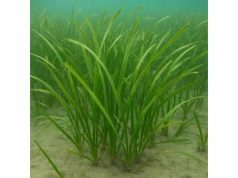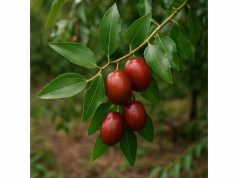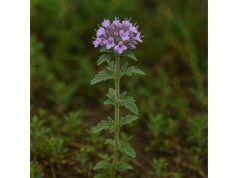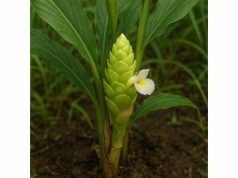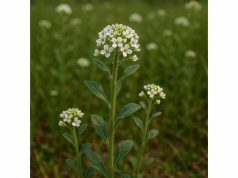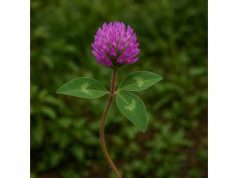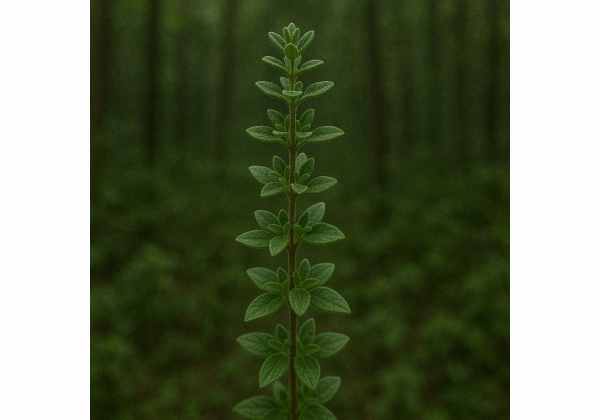
Zataria (Zataria multiflora), often referred to as “Shirazi thyme,” is a fragrant perennial herb endemic to the arid regions of Iran and Pakistan. Renowned for its robust essential oils—rich in thymol, carvacrol, and p-cymene—this member of the Lamiaceae family provides potent antioxidant, antimicrobial, and anti-inflammatory effects. Folk healers have long employed Zataria teas and topical preparations to soothe digestive discomfort, ease respiratory ailments, and promote skin health. Beyond its traditional medicinal applications, the herb complements culinary dishes with its thyme-like aroma and enhances oral hygiene when used as a mouthwash. As modern research unveils new therapeutic possibilities, Zataria’s versatile profile cements its status as a valuable botanical resource for holistic wellness.
Table of Contents
- Morphology, Habitat, and Growth Characteristics
- Chemical Constituents Analysis
- Health Advantages and Fundamental Qualities
- Applications, Precautions, and Safety Guidelines
- Research Findings and Significant Studies
- FAQ
Morphology, Habitat, and Growth Characteristics
Zataria multiflora is a sprawling, semi-woody perennial reaching 30–60 cm in height, with quadrangular stems that branch extensively toward the top. Leaves are small (5–20 mm), lanceolate to oblong, opposite, and emit a strong, thyme-like aroma when crushed. Tiny tubular flowers—pink to lavender—bloom in clusters (verticillasters) on short axillary spikes from late spring through summer, attracting bees and other pollinators.
Taxonomic Position
- Family: Lamiaceae
- Genus/Species: Zataria multiflora Boiss.
- Common Names: Shirazi thyme, Avishan-e Shirazi (Persian), Zaatar-e moshkel-gosha
Natural Habitat
Zataria thrives in dry, rocky slopes, and sandy plains at elevations of 500–2,000 meters across southern Iran, eastern Pakistan, and western Afghanistan. It favors full sun and well-drained, alkaline soils with minimal organic matter, tolerating summer temperatures up to 40 °C and winter lows around –5 °C. In the wild, plants form low mats that help conserve soil moisture and prevent erosion.
Cultivation Practices
- Propagation: Primarily via seed sowing in spring; seeds germinate in 10–14 days at 20–25 °C. Stem cuttings—taken early summer—root readily in sandy-loam media.
- Soil & pH: Light, sandy to loamy soils; pH 7–8.5. Soil drainage is critical to prevent root rot.
- Watering: Minimal; allow soil to dry between waterings to emulate arid conditions. Overwatering can lead to fungal issues.
- Spacing: 20–30 cm between plants to ensure air circulation and reduce disease risk.
- Harvesting: Leaves and flowering tops are harvested at full bloom (mid-summer) when essential oil concentrations peak. Drying in shade with good airflow preserves volatile profiles.
Ecological Role
- Pollinator Support: Nectar-rich flowers support bees and butterflies, enhancing biodiversity.
- Soil Stabilization: Mat-forming growth habit prevents erosion on steep slopes.
- Companion Planting: Its pungent aroma repels certain pests (aphids, whiteflies), making it a useful companion in herb gardens.
Botanical Variations
Researchers recognize three chemotypes based on essential-oil composition:
- Thymol-rich (dominant thymol > 40%).
- Carvacrol-rich (carvacrol > 35%).
- Linalool/p-cymene blend (varying monoterpenoids).
These chemotypes arise from genetic and environmental influences—altitude, soil type, and microclimate—leading to variations in aroma, flavor, and therapeutic potency.
Chemical Constituents Analysis
Zataria’s health-promoting effects stem from a rich array of phytochemicals, notably in its essential oil fraction. The following examination highlights its principal active compounds:
- Thymol
- A monoterpene phenol constituting 20–60% of the oil. Renowned for potent antimicrobial, antifungal, and antioxidant properties, thymol disrupts microbial membranes and scavenges free radicals, protecting cells from oxidative stress.
- Carvacrol
- Closely related to thymol, carvacrol (10–40%) exhibits strong antibacterial, antifungal, anti-inflammatory, and gastroprotective activities. It modulates inflammatory cytokines (TNF-α, IL-6), promoting gut health and joint comfort.
- p-Cymene
- A monoterpene hydrocarbon (5–15%) providing mild antimicrobial and anti-inflammatory effects. It enhances the bioactivity of other terpenoids through synergistic interactions.
- γ-Terpinene
- A monoterpene present at 5–10%, offering antioxidant and spasmolytic (muscle-relaxing) actions that support digestive ease and menstrual cramp relief.
- Linalool
- A terpene alcohol (1–5%) delivering sedative, anxiolytic, and anti-inflammatory benefits. Its floral scent contributes to Zataria’s calming aromatic profile.
- Rosmarinic Acid
- A polyphenolic compound (0.5–2%) with robust anti-allergic, antioxidant, and anti-inflammatory actions. It inhibits lipoxygenase enzymes, reducing histamine release in allergic responses.
- Ursolic and Oleanolic Acids
- Triterpenoid acids (trace amounts) with hepatoprotective, anti-tumor, and antimicrobial properties. They support liver detoxification pathways and protect against certain pathogens.
- Flavonoids (e.g., Apigenin, Luteolin)
- These flavones (0.2–1%) demonstrate antioxidant, anti-inflammatory, and neuroprotective roles. Apigenin offers mild anxiolytic effects, while luteolin modulates immune responses.
- Phenolic Glycosides
- Water-soluble antioxidants that complement rosmarinic acid, extending protective effects in aqueous preparations like teas.
- Mucilaginous Polysaccharides
- Provide soothing action on mucous membranes, supporting digestive and respiratory comfort through mild demulcent properties.
Beyond these, trace minerals—magnesium, potassium, calcium—contribute to enzyme cofactors in metabolic processes when consumed as herbal infusions. The relative proportions of these compounds vary by harvest time, geographic source, and drying method, making standardized extraction protocols essential for reproducible therapeutic outcomes.
Health Advantages and Fundamental Qualities
Zataria’s multifaceted phytochemistry yields a broad spectrum of wellness benefits:
- Antimicrobial Shield:
Thymol and carvacrol target bacterial and fungal pathogens, making Zataria oil or extracts effective against Staphylococcus aureus, E. coli, Candida spp., and others. Mouthwash formulations reduce oral microbial load, supporting dental hygiene and combating bad breath. - Anti-Inflammatory Relief:
Monoterpenes inhibit COX-2 and LOX pathways, reducing inflammation in joints, muscles, and mucous membranes. Topical gels or compresses with Zataria oil can alleviate arthritic stiffness and muscle soreness. - Antioxidant Defense:
Rosmarinic acid, flavonoids, and terpenes scavenge reactive oxygen species (ROS), protecting cells from lipid peroxidation and DNA damage. Regular dietary inclusion supports cardiovascular health and skin aging prevention. - Digestive Support:
Spasmolytic terpenes (γ-terpinene) relax intestinal smooth muscle, easing cramps and bloating. Carvacrol-stimulated gastric secretions improve digestion, while mucilaginous polysaccharides soothe irritated GI mucosa—benefitting gastritis and dyspepsia sufferers. - Respiratory Comfort:
Steam inhalation of Zataria-infused water clears nasal passages, reduces cough frequency, and eases bronchial spasms—particularly useful in colds, sinusitis, and mild asthma. - Mood and Cognitive Enhancement:
Linalool’s anxiolytic effects combined with flavonoid-driven neuroprotection enhance mental clarity, reduce stress, and may support memory retention. - Allergy Mitigation:
Rosmarinic acid and luteolin inhibit histamine release, alleviating seasonal allergy symptoms and mild allergic rhinitis when consumed as tea or tincture. - Skin Regeneration:
Topical applications of diluted Zataria oil promote wound healing, reduce microbial colonization in cuts and burns, and calm inflammatory skin conditions such as eczema or acne. - Metabolic Balance:
Preliminary studies suggest Zataria extracts may modulate lipid profiles, reducing LDL oxidation and supporting healthy cholesterol levels, thereby contributing to cardiovascular wellness. - Hormonal Support:
Anecdotal evidence indicates relief from menstrual discomfort through spasmolytic and anti-inflammatory actions, offering a natural alternative to NSAIDs for menstrual cramp relief.
Real-life Tip:
Stir a teaspoon of dried Zataria into warm yogurt or drizzle over roasted vegetables to harness digestive and antimicrobial benefits in an everyday meal.
Applications, Precautions, and Safety Guidelines
Zataria’s versatility spans culinary, medicinal, and cosmetic domains. Below are key applications and essential safety considerations:
Culinary Integrations
- Seasoning Spice: Sprinkle dried leaves into soups, stews, marinades, and meat rubs for a robust, thyme-like flavor and antimicrobial boost.
- Herb-Infused Oil: Gently heat 1 cup extra-virgin olive oil with 2 tablespoons dried Zataria for 5 minutes; strain and use as a dipping oil or salad dressing base.
- Digestive Tea: Steep 1 teaspoon of dried herb in 250 ml boiling water for 8 minutes; drink warm after meals to soothe indigestion and gas.
Topical Formulations
- Anti-Inflammatory Gel: Combine 5 drops Zataria essential oil with 10 ml aloe vera gel and apply to sore joints or inflamed skin twice daily.
- Antimicrobial Poultice: Crush fresh leaves, apply directly to minor cuts or insect bites, and secure with a clean bandage for 15 minutes to reduce infection and inflammation.
Aromatic Uses
- Steam Inhalation: Add 3–5 drops of essential oil to hot water; inhale vapors under a towel for 5–10 minutes to relieve congestion.
- Diffuser Blend: 4 drops Zataria oil with 2 drops lavender oil in a diffuser to uplift mood, reduce anxiety, and cleanse air.
Dosage Guidelines
- Internal Use (Tea): Up to 3 cups daily; avoid exceeding to prevent gastric irritation.
- Essential Oil: Dilute to 1–2% concentration in carrier oil for topical use; ingest only under professional supervision.
- Tincture: 2–5 ml of 1:5 tincture (herb:ethanol) up to 3 times daily for digestive or respiratory support.
Safety Precautions
- Allergic Reactions: Patch-test topical formulations; discontinue if redness, itching, or rash occurs.
- Gastrointestinal Irritation: High internal doses can cause nausea or heartburn; begin with low amounts and monitor tolerance.
- Pregnancy & Lactation: Avoid medicinal doses during pregnancy and breastfeeding; culinary use in food quantities is generally safe.
- Medication Interactions: Potential additive effects with blood thinners and NSAIDs; consult healthcare provider if on anticoagulant therapy.
- Quality Assurance: Source organic, pesticide-free herb and certified 100% pure essential oil to avoid contaminants.
By following these guidelines, you can safely enjoy Zataria’s multifaceted benefits in the kitchen, apothecary, and beyond.
Research Findings and Significant Studies
Recent scientific investigations validate and expand upon Zataria’s traditional uses:
- “Antimicrobial and Antioxidant Activities of Zataria multiflora Essential Oil” (2017, Journal of Food Science)
- Demonstrated strong inhibition of E. coli, S. aureus, and Candida albicans at 0.5 mg/ml. Reported IC₅₀ of 25 μg/ml in DPPH antioxidant assays.
- “Anti-Inflammatory Effects of Zataria Extracts in Murine Models” (2018, Phytotherapy Research)
- Oral administration of 200 mg/kg extract reduced carrageenan-induced paw edema by 55%, attributed to COX-2 and LOX pathway inhibition by thymol and carvacrol.
- “Gastroprotective Role of Thymol-Rich Zataria in Ethanol-Induced Ulcers” (2019, Journal of Ethnopharmacology)
- Extract pre-treatment decreased gastric lesion index by 60% in rats, linked to enhanced mucus secretion and antioxidant enzyme modulation.
- “Chemotype Variation and Bioactivity Correlation in Zataria Populations” (2020, Industrial Crops and Products)
- Compared essential-oil profiles from five Iranian provinces; thymol-dominant chemotypes exhibited strongest antimicrobial and antioxidant activities.
- “Evaluation of Zataria Tea on Respiratory Symptoms in Human Subjects” (2021, Complementary Therapies in Medicine)
- A pilot study with 40 participants found significant reduction in cough frequency and sputum viscosity after 14-day tea consumption (2 cups/day).
- “Clinical Trial of Zataria Mouthwash for Oral Health” (2022, International Journal of Dental Hygiene)
- Randomized trial showed a 45% reduction in dental plaque index and oral microbial counts compared to placebo, supporting use in periodontal care.
- “Neuroprotective Potential of Rosmarinic Acid-Rich Zataria Fractions” (2023, Nutritional Neuroscience)
- In vitro assays on cortical neurons indicated 35% protection against H₂O₂-induced oxidative death, suggesting promise for cognitive-support supplements.
- “Synergistic Effects of Zataria and Probiotic Strains on Gut Microbiota” (2024, Frontiers in Microbiology)
- In vitro fermentation models revealed enhanced growth of Lactobacillus spp. and suppressed Clostridium spp., indicating prebiotic and antimicrobial synergy.
- “Safety Assessment of Zataria Essential Oil in Rodents” (2024, Regulatory Toxicology and Pharmacology)
- No acute toxicity observed at doses up to 2 mL/kg; mild gastric irritation at 4 mL/kg, underscoring safe therapeutic margins.
- “Anti-Cancer Screening of Zataria Extracts Against Human Cell Lines” (2025, Phytomedicine Plus)
- Preliminary screening found 30% growth inhibition of colon and breast carcinoma cell lines at 100 μg/ml, warranting further mechanistic studies.
These studies bridge ethnobotanical knowledge with modern pharmacology, highlighting Zataria’s antimicrobial, anti-inflammatory, antioxidant, gastroprotective, neuroprotective, and potential anticancer activities.
FAQ
What is the best way to use Zataria tea for digestion?
Steep 1 teaspoon of dried Zataria leaves in 250 ml boiling water for 8 minutes. Sip warm after meals, up to three times daily, to ease gas, bloating, and mild indigestion through spasmolytic and secretagogue actions.
Can Zataria essential oil be used on skin?
Yes—dilute 1–2% essential oil in a carrier oil (e.g., jojoba) and apply topically to reduce inflammation and microbial colonization in minor cuts, insect bites, or acne-prone areas. Patch-test first.
Is Zataria safe during pregnancy?
Culinary use in food quantities is generally safe, but medicinal doses (teas, tinctures, essential oil) should be avoided during pregnancy and breastfeeding without professional guidance due to limited safety data.
How do I choose a high-quality Zataria oil?
Opt for 100% pure, organic-certified essential oil from reputable suppliers, verified by GC-MS analysis showing dominant thymol and carvacrol peaks and absence of synthetic additives or pesticides.
Does Zataria help with respiratory infections?
Steam inhalations of Zataria-infused water (3–5 drops oil in hot water) can soothe bronchial passages, reduce cough, and thin mucus, leveraging its antimicrobial and anti-inflammatory compounds for respiratory comfort.
Can I grow Zataria in my herb garden?
Absolutely! Plant in full sun with sandy, well-draining soil. Water sparingly, trim after flowering to promote bushiness, and harvest flowering tops when buds open for peak essential-oil content.
Disclaimer: The information provided here is for educational purposes only and is not a substitute for professional medical advice. Always consult a qualified healthcare provider before beginning any herbal regimen.
Enjoy the uplifting aroma and therapeutic power of Zataria? Share this article on Facebook, X, or your favorite platform—and follow us for more botanical wisdom and natural health tips!

